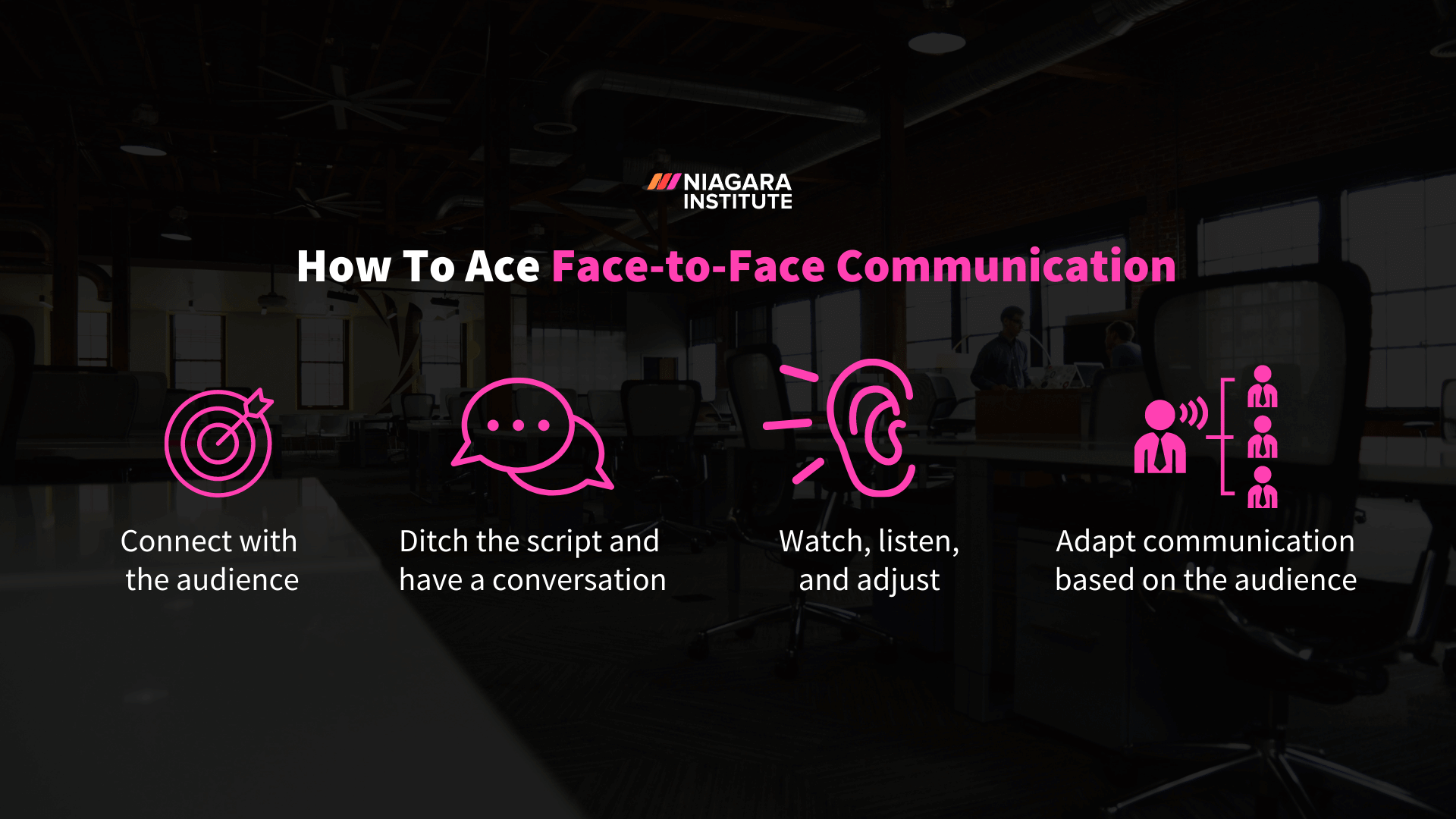6 min read
21 Motivational Communication Quotes for Work
How much time do you spend every single day at work communicating with others? For a lot of people, the answer is the majority of their day. Between...
3 min read
 Michelle Bennett
:
Mar 16, 2021 5:15:00 AM
Michelle Bennett
:
Mar 16, 2021 5:15:00 AM
.png)
We’ve always known that face-to-face communication is the most effective way to inspire action. This is backed by research, like this HBR article which cited research in the Journal of Experimental Social Psychology that found face-to-face communication to be 34 times more effective than email. But perhaps nothing has driven home the power of face-to-face communication more than the endless virtual meetings that drain us and act as a poor facsimile for the power of being together in person.
Four basic communication skills underpin successful leadership and should be incorporated into all your face-to-face communications so you can fully engage your audience and amplify your impact.

Whether it is a one-on-one meeting with an employee or a team, it’s not enough to show up and start talking. The most effective leaders begin by forging a personal and emotional connection with their audience that sets the stage for the conversation they want to have.
That means doing more than telling a joke or having an “ice-breaker”; it means sharing a story about the project the team is about to launch, doing some empathetic listening about the challenges the team is facing, or sharing relevant context for the issues on the table. This kind of connection unites everyone and prepares them to be fully present throughout the discussion.
Of course, preparation is critical to being present, but too often I’ve seen leaders over-prepare so they get every word just right. This leads to them literally reading their notes, and ultimately losing the connection with their audience. All of which is to say, great face-to-face communication demands balance. You must prepare enough that you have a grabber, key message, a few supporting points, and a call to action for the end. But after that, you have to let the rest flow. This will allow you to gauge the impact of your ideas on your listeners, and to adjust which points you make, what questions you ask, or even what next steps you suggest. This interactivity is what makes the face to face communication so powerful.
Being present gives you access to so many cues from your audience. Start with eye contact. Establish a strong connection, ideally with each person (in small groups) or with a good chunk of a larger audience (resist the temptation to “scan” the whole room and focus instead on individuals). Then, read the body language. Are people physically present and engaged? Or are they closed off, distracted, or even confrontational? These non-verbal cues are crucial as they will inform the tone you take delivering your remarks. As you start the conversation or talk, listen for how the audience engages, specifically for the substance but also for the tone and emotional tenor of the responses.
Preparation is important, but the most effective leaders adapt their message, argument, and call to action based on their audience. So, the next time to start communicating face to face, use all the verbal and nonverbal cues to read the room. That’s your chance to decide if you push ahead as planned or shift course. For example, a tense audience may demand more emotional empathy, while an excited group allows you to raise your energy level to match their passion.
The next moment to really adapt your communication is after you deliver your message. Read the room for how they react. If they push back, consider what arguments to use. If they are quiet, you may need to draw them out. If they show they are already bought in, skip the persuasion and jump to your call to action.
Finally, as you go through to the end of your communication, you may adapt your next steps based on the level of commitment and enthusiasm you see and hear. Whatever you went in hoping to achieve, re-evaluate what your audience is ready for and adapt your call to action accordingly.
We all know intuitively that face-to-face communication is crucial to leadership communication. But to capitalize on the opportunity you have with your audience, it’s crucial to be intentional and purposeful in how you prepare and then how you speak at the moment.
Face-to-face communication, like any skill, can be learned and improved with practice. By seeking out leadership communication training and one-to-one coaching opportunities, you can take great strides in becoming a leader who communicates with intention and purpose every time you speak.
.png)
6 min read
How much time do you spend every single day at work communicating with others? For a lot of people, the answer is the majority of their day. Between...
.png)
5 min read
Effective communication is key to the success of every individual, team, and organization. However, there are many barriers to effective...

12 min read
Transition from individual contributor to manager represents one of the most significant—and frequently bumpy—career shifts professionals encounter....